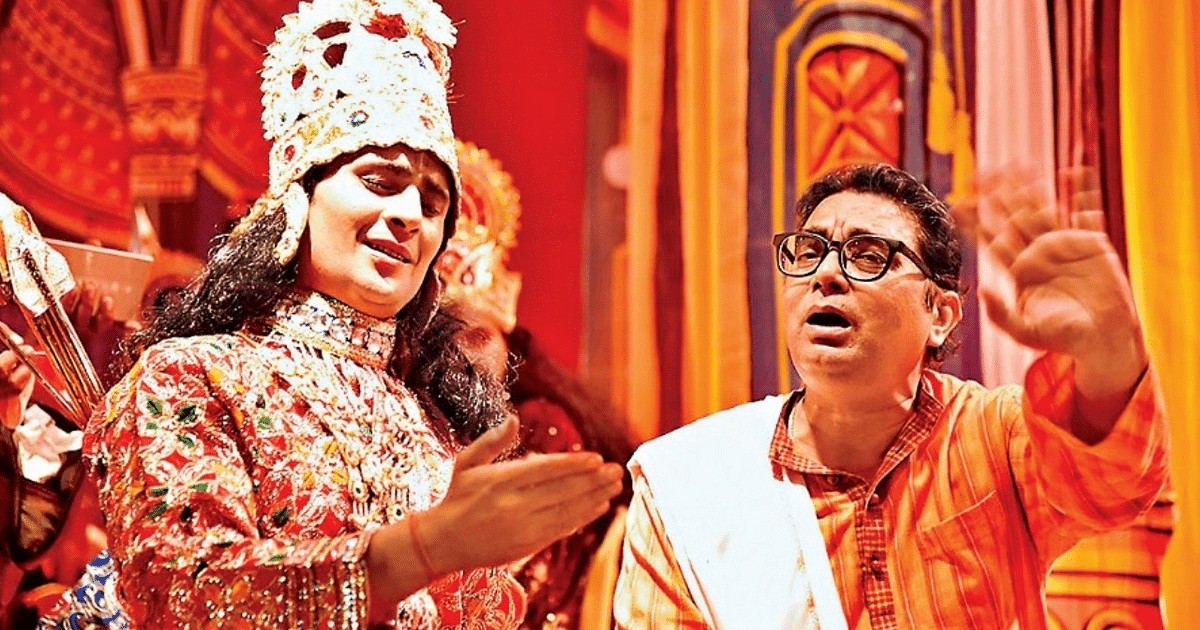Not much time has passed since ‘Adipurush’ came on the big screen. This film, which looked at the story of Ramayana from a different perspective, had to face heavy criticism. In fact, as a powerful symbol of the faith of the Indian people, Ram and his story have become so ingrained in the soil, air and water here that the audience is unable to tolerate any of his corrupted forms. Even in Ramanand Sagar’s serial ‘Ramayana’ which was appreciated in the late 80s, whenever something was shown that was different from the popular story, the audience sent a lot of letters in response. But the surprising thing is that the story of Ram and Ram appeared on the cinematic screen many times but Ramlila was rarely shown seriously in the cinema.
Ramkatha in films
Filmmakers had started telling and showing Ram Katha since the era of silent films. The first attempt was Dadasaheb Phalke’s ‘Lanka Dahan’ (1917). After this, Ram and the characters of Ramkatha were seen in many films. Actor Prem Adeeb and actress Shobhana Samarth (actress Kajol’s maternal grandmother) played the characters of Ram and Sita with such depth in the 40s in films like ‘Bharat Milap’, ‘Ram Rajya’, ‘Rambaan’ that they got the same respect from the audience. Started giving respect which was given to Arun Govil who played Ram and Deepika Chikhalia who played Sita in the serial ‘Ramayana’. Mahatma Gandhi, who considered cinema an evil for the society, the only film he saw in his life was ‘Ram Rajya’ (1943). Even in modern times, many films inspired by Ramayana have been made. Be it Manoj Kumar’s ‘Kalyug Aur Ramayana’ of 1987 or Mani Ratnam’s ‘Raavan’ of 2010.
Rajamouli’s ‘Bahubali’
Rajamouli’s ‘Baahubali’ was inspired by the characters and events of Mahabharata and Ramayana. But there was hardly any notable staging of Ramleela in Hindi films. Generally, the staging of Ramlila was shown in films only as a joke or a mockery. In a scene from Amol Palekar’s 1977 film ‘Gharaunda’, the character playing Hanuman on the stage tells the character playing Ravana to leave Balwant Singh (Sita) and the character playing Sita comes on stage smoking beedi. Such ridiculous scenes are seen in many other films. Be it Ayushmann Khurrana’s 2013 film ‘Nautanki Saala’ or 2009 Rakeysh Omprakash Mehra’s ‘Delhi 6’, Ramleela was used only in a humorous manner. If seen, these scenes were actually indicating the corruption of Ramlilas. It cannot be denied that the sanctity of Ramkatha has been diminished in some Ramlilas.
Story woven around Ramlila
Rajkumar Santoshi’s 2001 film ‘Lajja’ depicted the condition of women through four heroines with names synonymous with Sita – Janaki, Vaidehi, Maithili and Ramdulari. There were scenes of Ramlila in this film also. However, a deeper depiction of the Ram story was seen in Ashutosh Gowarikar’s ‘Swades’ released in 2004. In this, a song written by Javed Akhtar also contained a meaningful line like ‘Man se Ravana jo nikale, Ram uske man mein hain…’. Prateek Gandhi’s ‘Bhavai’ was released in 2001 based on the story based on Ramleela, whose name the audience may not have even heard of. In this film, the young man playing the character of Ravana and the girl playing the character of Sita fall in love, and the entire society stands against them. Now director Rakesh Chaturvedi Om’s film ‘Mandali’ is coming, which is completely focused on Ramleela and its troupe of artists. This film is the story of a city where things like item dance during the staging of Ramlilas are polluting the atmosphere of Ramlila. The hero opposes this, and re-establishes his closed group. This film also shows the personal lives of Ramleela artists, their difficulties and dilemmas. Inspired by Premchand’s story ‘Ramlila’, this film can be called a meaningful effort towards giving Ram’s Leela a place in cinema.

